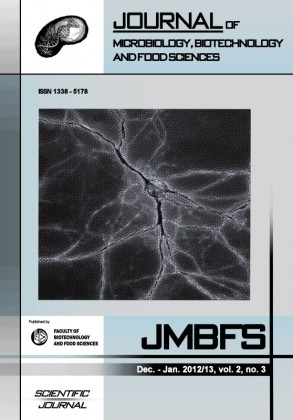PRODUCTION OF POLYHYDROXYALKANOATE (PHA) USING HYDROLYZED GRASS AND SYZYGIUM CUMINI SEED AS LOW COST SUBSTRATES
Keywords:
Polyhydroxyalkonoates (PHA), grass, seed, Ralstonia eutropha, FTIRAbstract
Hydrolyzed Bermuda grass (Cyanidon dactylon) and Jambul seed (Syzygium cumini), were used as carbon sources for the production of Polyhydroxyalkanoate (PHA) from soil microbial isolates. The efficiency of selected isolate for PHA production utilizing the hydrolyzed substrate as carbon source was compared with Ralstonia eutropha (reference strain) using the same production medium. The best isolate SP-Y1 and Ralstonia eutropha were able to accumulate 26.76% and 28.97% of their dry cell weight when hydrolyzed grass was used as substrate and PHA accumulation increased to 41.7% and 42.2% when hydrolyzed seed was used as a sole carbon source.Downloads
Download data is not yet available.
Downloads
Published
2012-12-03
How to Cite
Jeyaseelan, A., Pandiyan, S., & Ravi, P. (2012). PRODUCTION OF POLYHYDROXYALKANOATE (PHA) USING HYDROLYZED GRASS AND SYZYGIUM CUMINI SEED AS LOW COST SUBSTRATES. Journal of Microbiology, Biotechnology and Food Sciences, 2(3), 967–982. Retrieved from https://office2.jmbfs.org/index.php/JMBFS/article/view/7139
Issue
Section
Food Sciences
License
Copyright (c) 2012 Aravind Jeyaseelan, Sasikala Pandiyan, Preethi Ravi

This work is licensed under a Creative Commons Attribution 4.0 International License.
All papers published in the Journal of Microbiology, Biotechnology and Food Sciences are published under a CC-BY licence (CC-BY 4.0). Published materials can be shared (copy and redistribute the material in any medium or format) and adapted (remix, transform, and build upon the material for any purpose, even commercially) with specifying the author(s).

